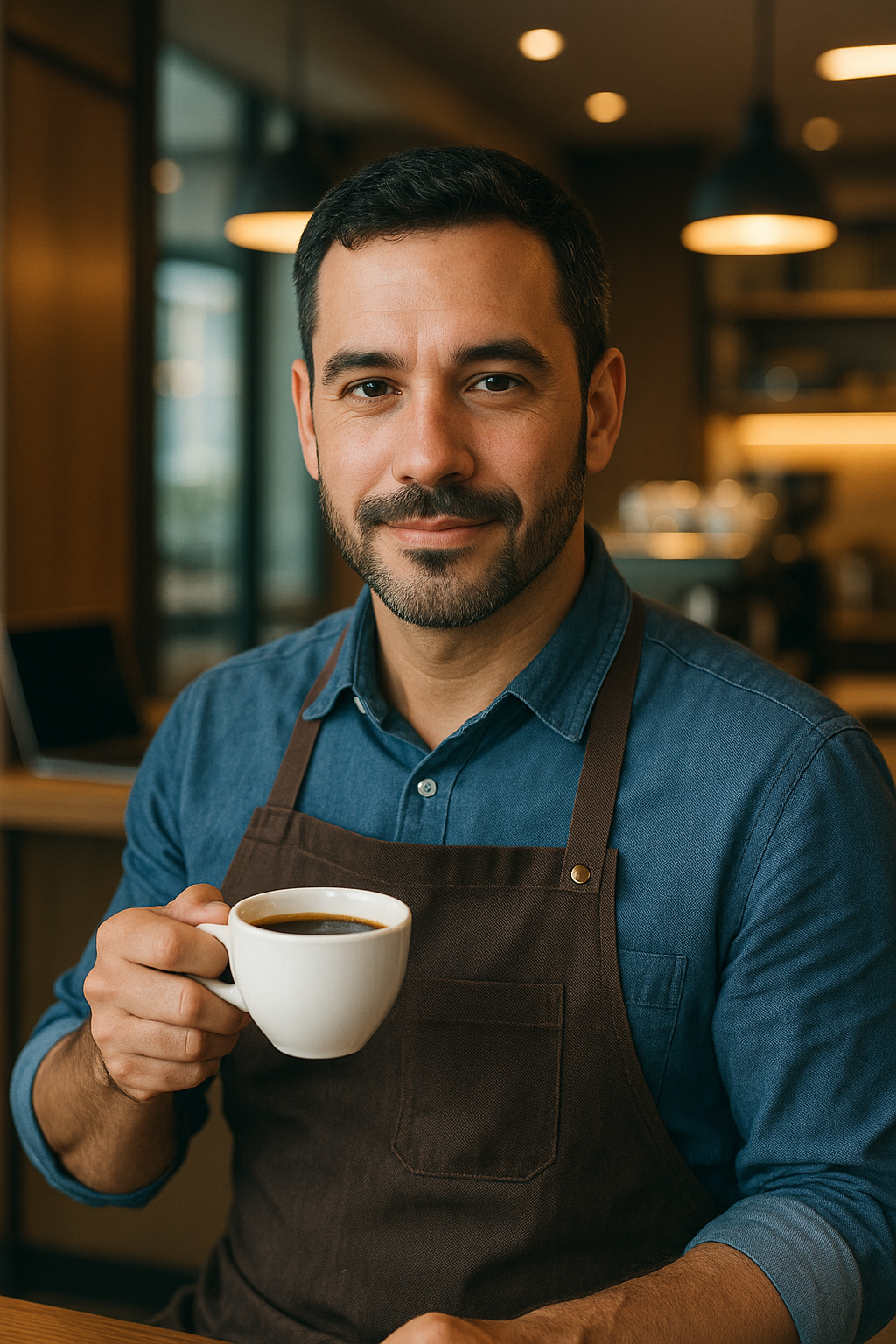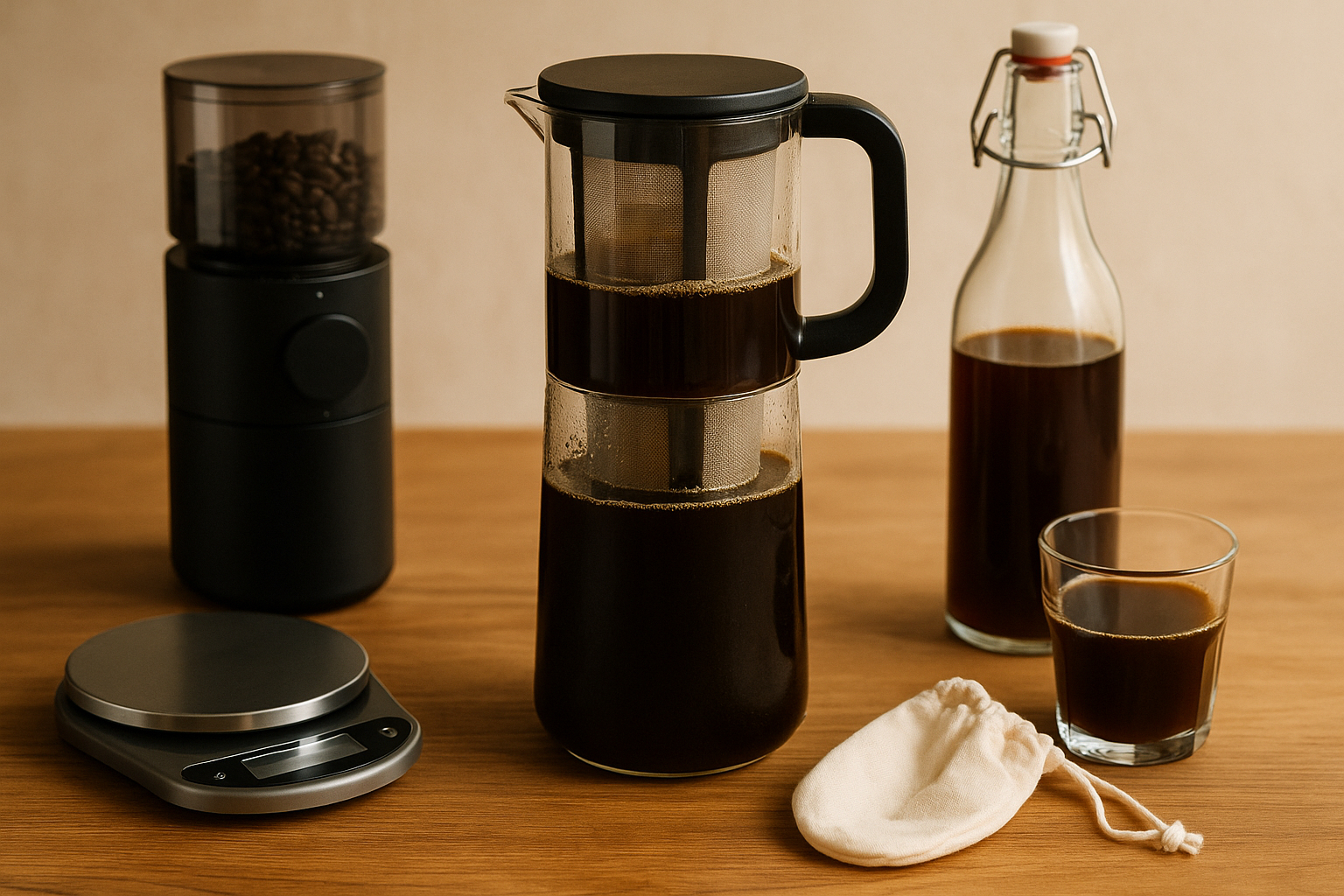Cold brew has surged in popularity for good reason—it’s smooth, mellow, and incredibly refreshing, especially when served over ice.
But this method of coffee brewing is more than just trendy; it’s also highly forgiving and easy to customize. The key to unlocking its potential lies in choosing the right equipment and understanding how the brewing process works.
In this detailed guide, we’ll break down exactly what you need to make excellent cold brew at home—whether you’re just getting started or ready to upgrade your setup.
From filters and grinders to carafes and pro systems, you’ll find out which tools are essential, which are nice-to-have, and how to get the best flavor out of every batch.
Why Cold Brew Is Different from Other Methods
Cold brew is a slow, immersion-based brewing technique where coffee grounds are steeped in cold or room temperature water for 12 to 24 hours. Unlike hot brewing, cold brew:
- Extracts fewer acids and bitter compounds
- Yields a smooth, rich, and slightly sweet flavor
- Produces a strong concentrate that can be diluted
Because it’s brewed without heat, the brewing equipment and grind size take on an even more critical role in ensuring a consistent and satisfying final product.
Essential Cold Brew Equipment
You don’t need a lot of gear to make cold brew—but the right tools will make your coffee better, cleaner, and more efficient.
1. Coffee Grinder (Burr Grinder)
Why it matters: Cold brew requires a coarse grind, similar to raw sugar or kosher salt. Using a blade grinder creates uneven particles, leading to bitter or muddy coffee.
Recommended Grinders:
- Baratza Encore – Reliable, entry-level electric burr grinder
- 1Zpresso JX-Pro – Manual grinder with excellent coarse settings
- Fellow Ode Gen 2 – Stylish and powerful, perfect for large batches
Tip: Always grind fresh for the best flavor and aroma.
2. Cold Brew Maker or Brewer
Your brewing container must allow for full immersion, be large enough for the batch size you want, and preferably include an integrated or removable filter.
Popular Cold Brew Makers:
| Brewer | Features | Best For |
|---|---|---|
| Takeya Cold Brew | 1–2 quart pitcher, built-in fine mesh filter | Beginners and fridge brewers |
| OXO Cold Brew Maker | Rainmaker lid, reusable filter, 32 oz yield | Easy draining and storage |
| Hario Mizudashi | Glass carafe, built-in strainer | Stylish and space-saving |
| Toddy Cold Brew System | Rubber stopper + felt filter system | Larger batches, smoother concentrate |
| DIY Mason Jar | Affordable, requires mesh bags or cheesecloth | Entry-level, low budget |
Pro Tip: If using a jar or pitcher, pair it with a cold brew filter bag—they’re inexpensive and make cleanup a breeze.
3. Filter Options
Cold brew can be filtered in different ways. Your choice affects clarity, body, and cleanup ease.
| Filter Type | Pros | Cons |
|---|---|---|
| Metal mesh | Reusable, easy to clean | May allow fines into brew |
| Cloth filter | Clean cup, good clarity | Must be cleaned and dried |
| Paper filter | Excellent clarity | Single-use, adds cost |
| Filter bag (nylon or cotton) | Convenient and effective | May retain some oils |
4. Brewing Vessel (If Not Using a System)
If you’re not using a dedicated cold brew system, you can use:
- Glass mason jars (quart or half-gallon)
- French Press (steep, then press to filter)
- Large pitcher with cold brew bag
Whatever you choose, make sure it:
- Can be sealed or covered
- Has enough volume for both grounds and water
- Is easy to clean
5. Storage Bottles or Carafes
After brewing, it’s best to strain and store your cold brew in a separate container. Use:
- Glass bottles with tight caps
- Swing-top containers
- Pitchers with spouts
- Reused glass milk or juice bottles
Cold brew concentrate stays fresh for 7 to 10 days when refrigerated.
Optional but Useful Accessories
- Scale – To keep your coffee-to-water ratio consistent (suggested ratio: 1:5 for concentrate, 1:8 for ready-to-drink)
- Timer or phone alarm – To avoid over-steeping
- Labeling tape – To date your brews and keep track of strength/recipe
- Funnel – For easy transfer into storage bottles
Cold Brew Brewing Basics
Recommended Ratio:
- 1:5 for concentrate (e.g., 100g coffee to 500ml water)
- 1:8 for ready-to-drink (e.g., 100g coffee to 800ml water)
Steps:
- Grind your beans coarsely
- Add grounds to your filter or bag
- Fill with cold or room temp water
- Stir to ensure saturation
- Steep for 12–18 hours at room temp or in the fridge
- Remove filter or strain coffee
- Store in the fridge in a clean, sealed container
Dilution:
- Cold brew concentrate is strong. Dilute 1:1 with cold water, ice, or milk to taste.
Common Mistakes to Avoid
| Mistake | Fix |
|---|---|
| Grind too fine | Causes over-extraction and grit |
| Using stale beans | Results in flat or musty flavor |
| Not filtering well enough | Leaves sludge or bitterness |
| Steeping too long | Leads to bitterness and muddy notes |
| Using tap water | Chlorine affects taste—use filtered water |
Flavor Tips and Variations
- Add a cinnamon stick or orange peel during brewing for added flavor.
- Use single-origin light roasts for floral and fruity notes.
- Add vanilla extract or sweetened condensed milk when serving.
- For a sparkling twist, mix concentrate with tonic water and ice.
Final Thoughts: Simple Gear, Incredible Flavor
Cold brew is one of the most accessible and satisfying ways to enjoy coffee at home—especially with the right equipment. Whether you’re using a mason jar and a bag or a purpose-built system like the OXO or Toddy, your results will be clean, smooth, and packed with flavor.
Focus on the essentials: fresh beans, a good grinder, a reliable filter, and plenty of patience. Once you find your ideal ratio and brew time, you’ll never want to go back to bitter iced coffee again.

Marcelo Oliveira is a coffee enthusiast and content creator specializing in barista skills, brewing methods, equipment reviews, coffee-related health insights, and fascinating curiosities from the coffee world. With a deep passion for every step of the brewing process, he turns technical knowledge into accessible and engaging content for both beginners and seasoned coffee lovers. Marcelo’s goal is to help readers appreciate the full experience of coffee—from bean to cup.
